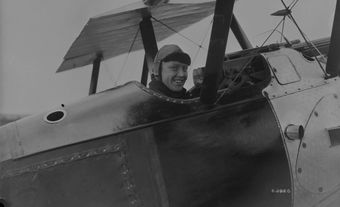Ivan Kenneth Eyre
Ivan Kenneth Eyre, painter (b at Tullymet, Sask 15 Apr 1935). Before settling in Saskatoon, Saskatchewan, in 1942, the Eyre family lived in Red Deer, Alberta, and the Saskatchewan communities of Turtleford, Southey and Ituna. Between 1946 and 1953, Eyre studied sporadically with Eli BORNSTEIN, Wynona Mulcaster, Ernest LINDNER and George Swinton. He studied at the University of Manitoba School of Art, 1953-57 (BFA), and at the University of North Dakota, Grand Forks, 1958-59. In 1959 Eyre joined the faculty of the University of Manitoba School of Art, retiring in 1992. He was awarded a Canada Council Senior Grant in 1965 which allowed an intensive period of work and study in Europe, 1965-67. Major retrospective exhibitions include Ivan Eyre Exposition, organized by the Robert McLaughlin Gallery, Oshawa (1980) and Ivan Eyre: Personal Mythologies/Images of the Milieu, Figurative Paintings, 1957-1988, organized by the Winnipeg Art Gallery (1988).The subject of Eyre's work is a personal mythology and landscape deriving from the exploration of his own psyche. The existential anxiety of the paintings of the early 1960s gives way by the late 1960s to a deliberate visual examination of issues related to existential ambiguity, choice, meaning and myth - the nature of existence and reality, of self-awareness deriving from the metaphysical alienation of an outsider. His own writing echoes this steadfast individuality of approach free from the influence of art trends. Drawings form the basis of Eyre's visual vocabulary, and except for his pure landscapes, all his paintings derive from them. The drawings formulate the mythological tableaux of his figurative paintings and capture the carefully constructed still lives, or nameless objects, made from objects found in the artist's studio, which appear in many of his paintings. The landscapes convey preternatural and mnemonic qualities - a strong sense of place, of prairie and woodland existence - but despite their spontaneity relative to his figurative work, they are still enmeshed with matters of contradiction and uncertainty which permeate his work as a whole. Ivan Eyre's work emphasizes the responsibility for individual choice in the continually unfolding world of possibility.

 Share on Facebook
Share on Facebook Share on X
Share on X Share by Email
Share by Email Share on Google Classroom
Share on Google Classroom



